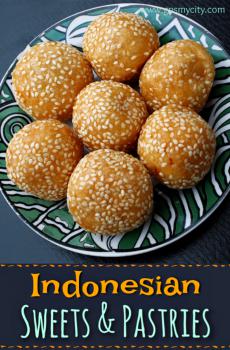
Museum Wayang (Puppet Museum), Jakarta
The Museum Wayang, established in 1975, is dedicated to preserving the centuries-old tradition of wayang, an art form that involves the use of specially crafted puppets. Also known as shadow theatre, these theatrical pieces serve both an entertaining and moralizing purpose by promoting traditional customs and values.
The museum, which houses over 5,000 exhibits, mostly wayang puppets made in Indonesia, is located on the site of the former Old Dutch Church that was first built in 1640. The church was later renovated in 1732 and renamed the New Dutch Church, but it was destroyed by an earthquake in 1808. A new building was constructed on the same site in the Neo-Renaissance style in 1912, which was initially used as a warehouse and later renovated in 1938 to reflect Dutch colonial architecture. The garden of the Wayang Museum, located in the former churchyard, was the burial site of former colonial General Governor Jan Pieterszoon Coen.
In 1939, the Batavia Society of Arts and Sciences bought the building and turned it into a museum called the Old Batavia Museum. After Indonesia gained independence in 1945, the building was transferred to the Institute of Indonesian Culture and then to the Ministry of Education and Culture in 1962.
Finally, in 1968, the DKI Jakarta Administration established the Wayang Museum, which opened on August 13, 1975. Along with wayang puppets from Java, Bali, Sumatra, Sunda, and Lombok, the museum also showcases international items from China, India, Pakistan, Vietnam, Malaysia, Suriname, France, Kelantan, England, and the United States. In addition to the puppet displays, the museum exhibits tools and equipment used in puppet crafting, and occasional demonstrations are conducted to introduce tourists to the art of puppetry.
The museum, which houses over 5,000 exhibits, mostly wayang puppets made in Indonesia, is located on the site of the former Old Dutch Church that was first built in 1640. The church was later renovated in 1732 and renamed the New Dutch Church, but it was destroyed by an earthquake in 1808. A new building was constructed on the same site in the Neo-Renaissance style in 1912, which was initially used as a warehouse and later renovated in 1938 to reflect Dutch colonial architecture. The garden of the Wayang Museum, located in the former churchyard, was the burial site of former colonial General Governor Jan Pieterszoon Coen.
In 1939, the Batavia Society of Arts and Sciences bought the building and turned it into a museum called the Old Batavia Museum. After Indonesia gained independence in 1945, the building was transferred to the Institute of Indonesian Culture and then to the Ministry of Education and Culture in 1962.
Finally, in 1968, the DKI Jakarta Administration established the Wayang Museum, which opened on August 13, 1975. Along with wayang puppets from Java, Bali, Sumatra, Sunda, and Lombok, the museum also showcases international items from China, India, Pakistan, Vietnam, Malaysia, Suriname, France, Kelantan, England, and the United States. In addition to the puppet displays, the museum exhibits tools and equipment used in puppet crafting, and occasional demonstrations are conducted to introduce tourists to the art of puppetry.
Want to visit this sight? Check out these Self-Guided Walking Tours in Jakarta. Alternatively, you can download the mobile app "GPSmyCity: Walks in 1K+ Cities" from Apple App Store or Google Play Store. The app turns your mobile device to a personal tour guide and it works offline, so no data plan is needed when traveling abroad.
Museum Wayang (Puppet Museum) on Map
Sight Name: Museum Wayang (Puppet Museum)
Sight Location: Jakarta, Indonesia (See walking tours in Jakarta)
Sight Type: Museum/Gallery
Guide(s) Containing This Sight:
Sight Location: Jakarta, Indonesia (See walking tours in Jakarta)
Sight Type: Museum/Gallery
Guide(s) Containing This Sight:
Walking Tours in Jakarta, Indonesia
Create Your Own Walk in Jakarta
Creating your own self-guided walk in Jakarta is easy and fun. Choose the city attractions that you want to see and a walk route map will be created just for you. You can even set your hotel as the start point of the walk.
Jakarta Introduction Walking Tour
The capital of Indonesia, Jakarta, is a massive, fast-paced metropolis and a melting pot of cultures – Asian and European – that historically coexisted and imprinted their influence on the city's architecture, language, cuisine, and lifestyle. The local Istiqlal Mosque is the largest Islamic temple in Southeast Asia, while the Neo-Gothic Gereja Katedral, also known as the Jakarta... view more
Tour Duration: 2 Hour(s)
Travel Distance: 4.1 Km or 2.5 Miles
Tour Duration: 2 Hour(s)
Travel Distance: 4.1 Km or 2.5 Miles
Jakarta's Colonial Buildings
Throughout the centuries, the European powers, particularly the Dutch who colonized Indonesia from the 1800s until 1945, left their mark on Jakarta. At one time known as Batavia, the de-facto capital of the Dutch East Indies, today Jakarta boasts a wealth of old-time structures, featuring a fascinating blend of European and Javanese design influences.
One of the most prominent areas to explore... view more
Tour Duration: 2 Hour(s)
Travel Distance: 2.7 Km or 1.7 Miles
One of the most prominent areas to explore... view more
Tour Duration: 2 Hour(s)
Travel Distance: 2.7 Km or 1.7 Miles
Useful Travel Guides for Planning Your Trip
Indonesian Sweets and Pastries
Spread across an archipelago of islands accommodating hundreds of ethnicities speaking many different languages, Indonesia is a cluster of just as many culinary traditions. And just as any other Asian culinary, Indonesian cuisine can't be imagined without a dollop of sweetness. Some of the...
Jakarta Shopping Guide: Top 11 Indonesian Products
The world's largest Muslim-populated country, Indonesia is also a mecca for tourists, drawing millions each year to her thousands of volcanic islands scattered between the Pacific and Indian oceans. The country's ethnic diversity has given rise to the lavish and colorful arts and...




